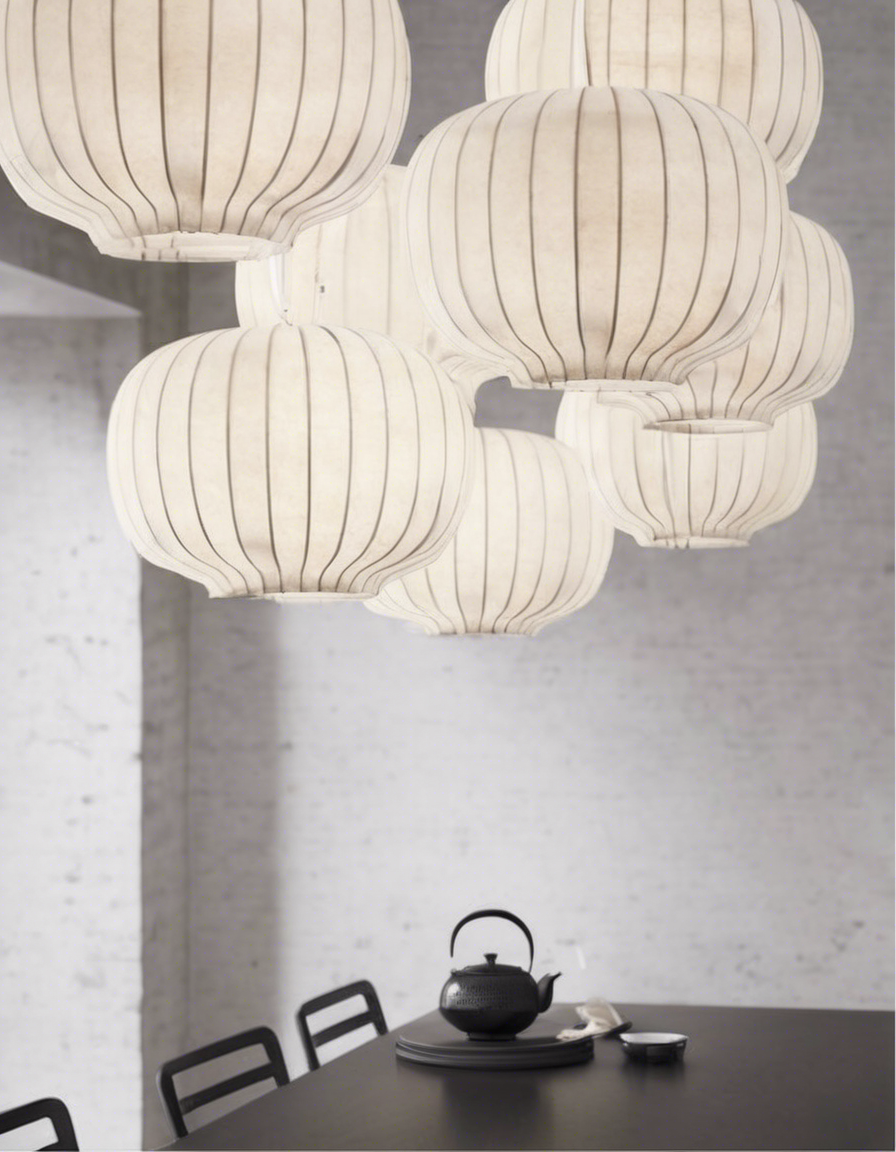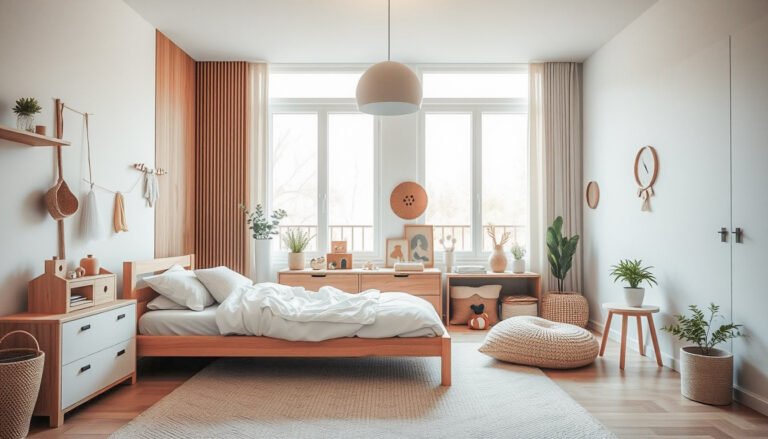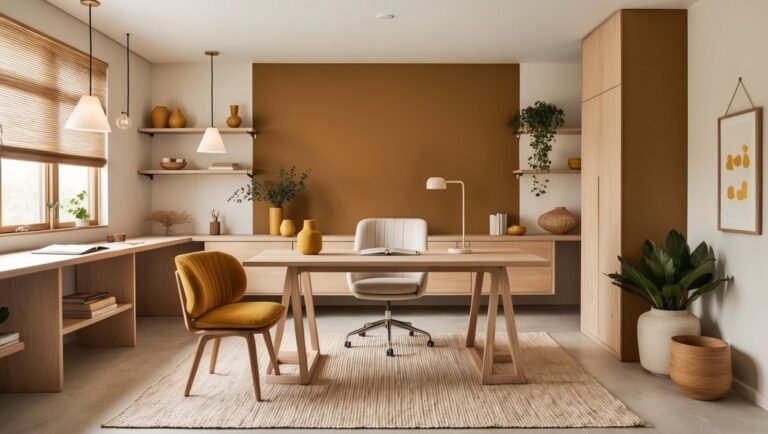What is Japandi Style? : Wabi-Sabi Meets Hygge in Home Design
Do you feel overwhelmed by today’s home design? Many of us want a peaceful place that’s both cozy and stylish. Japandi style is a perfect answer. It combines the simple beauty of Japanese design with the cozy feel of Scandinavian homes.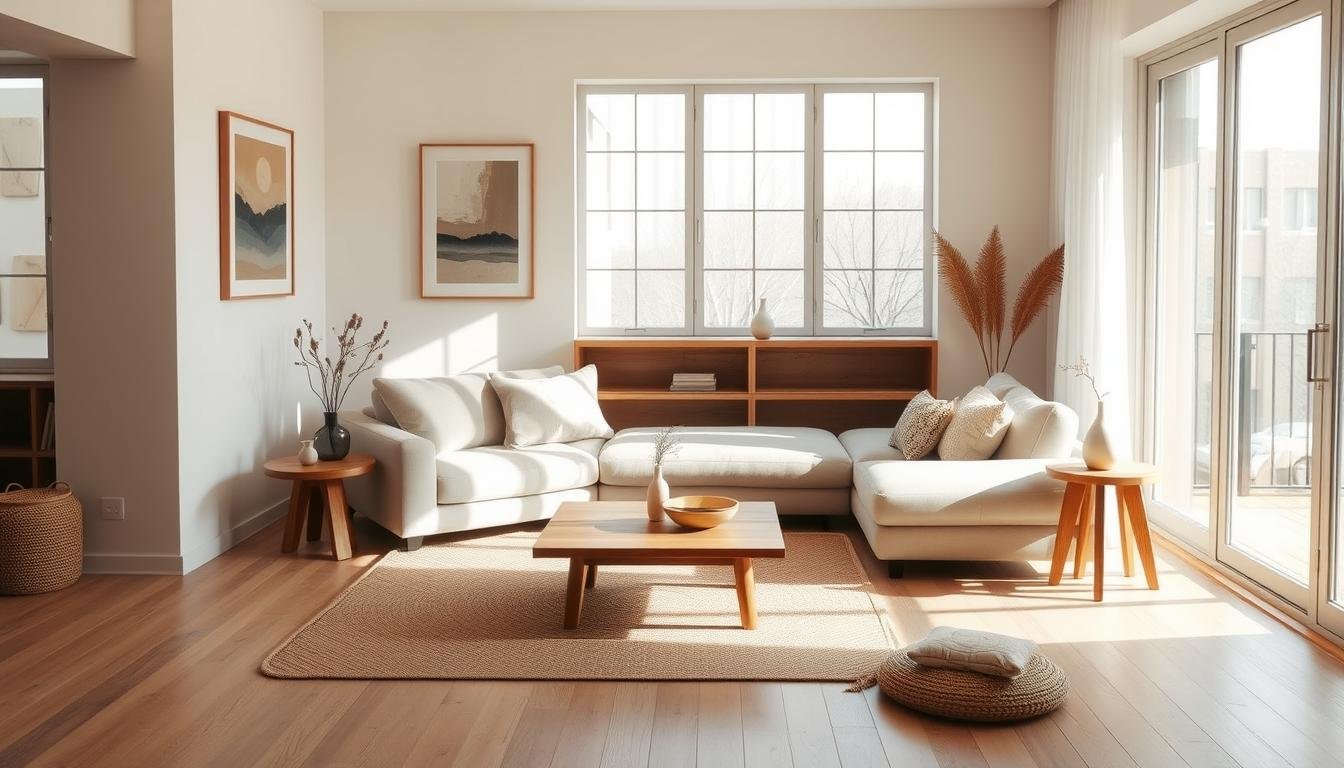 This mix creates spaces that are calm, inviting, and full of harmony. It’s ideal for those who want a serene home. Let’s see how you can bring this style into your life.
This mix creates spaces that are calm, inviting, and full of harmony. It’s ideal for those who want a serene home. Let’s see how you can bring this style into your life.
Key Takeaways
- Japandi style blends the minimalist aspects of Japanese design with the comfort of Scandinavian decor.
- Emphasizes natural materials like wood and bamboo for a sustainable approach.
- Neutral color palettes are complemented by traditional Japanese accents for added depth.
- Incorporates greenery and elegant plants to enhance both aesthetics and air quality.
- Finds beauty in imperfection through the concept of Wabi-Sabi.
Understanding Japandi Style
Japandi is a special interior design that mixes Scandinavian and Japanese styles. It’s a blend of simplicity and warmth. This style aims to create calm spaces that feel connected to nature.
Definition of Japandi
Japandi values function and quality. It loves clean lines and natural materials like wood. This design makes homes peaceful and inviting.
Fusion of Scandinavian and Japanese Aesthetics
Japandi brings together Scandinavian and Japanese elements. It values handmade items and greenery. This mix adds warmth and elegance to any space.
What is Japandi Style? : Wabi-Sabi Meets Hygge
The Japandi style is a mix of Wabi-Sabi and hygge. It finds beauty in simplicity and imperfection. This makes our homes feel nurturing and welcoming.
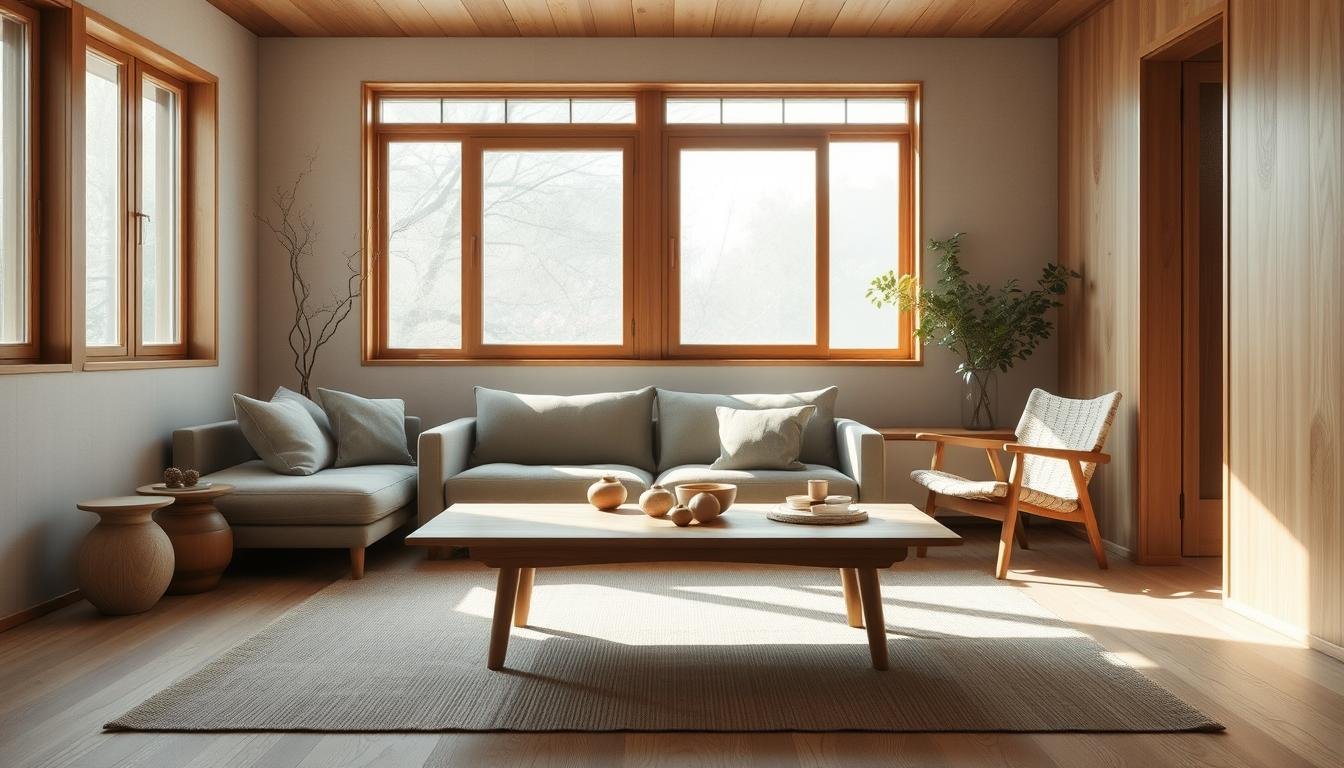
The Essence of Wabi-Sabi
Wabi-Sabi loves the fleeting nature of life. It uses natural materials and simple shapes. I choose furniture with unique textures to add stories to my home.
The Cozy Elements of Hygge
Hygge makes my home warm and cozy. I use soft fabrics like wool and linen in earthy colors. Adding soft lights, like Japanese lanterns, makes it even cozier.
Key Characteristics of Japandi Design
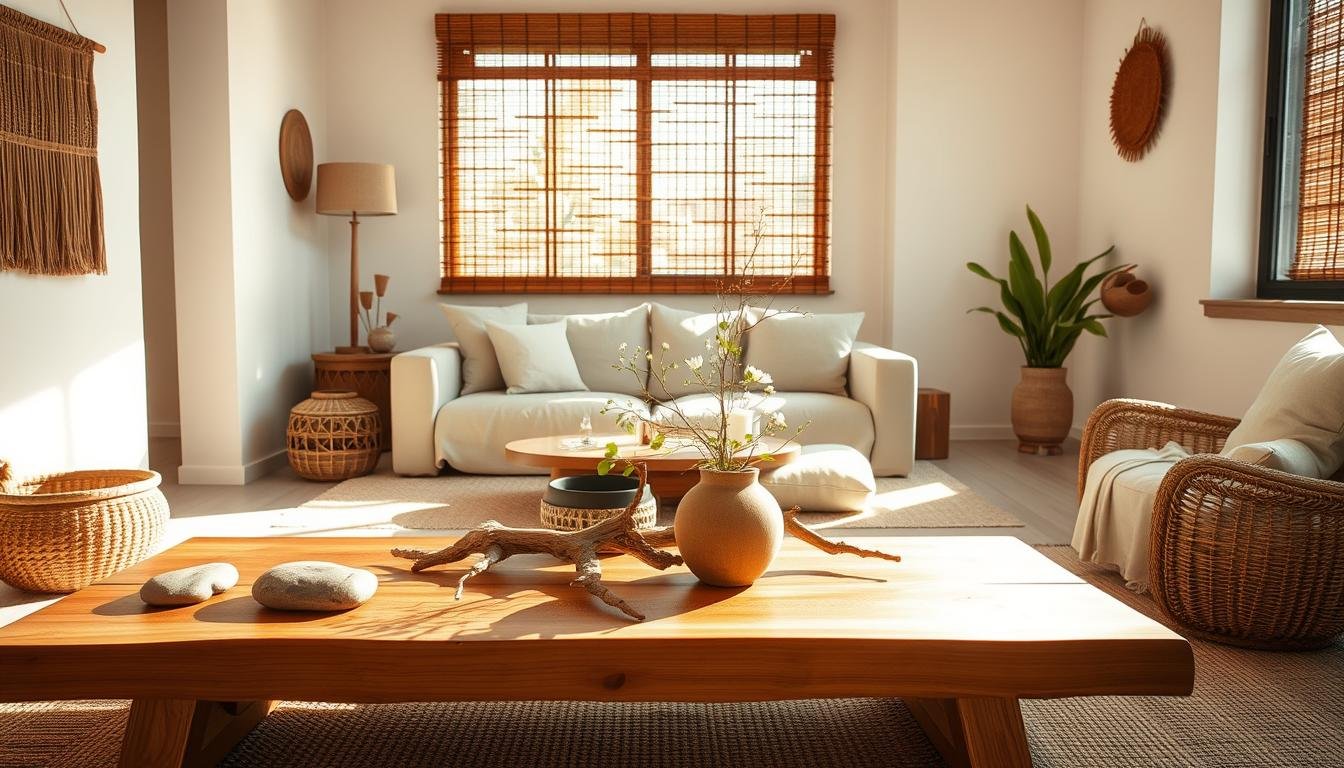
Japandi design mixes function with beauty. It’s all about minimalism and simplicity. Spaces are clean and calm, showing balance between what’s needed and what’s lovely.
Minimalism and Simplicity
Minimalist design seeks simplicity. It loves clean lines and a tidy look. Each item in a Japandi home has a purpose, making the space feel peaceful.
Natural Materials and Textures
Natural materials are key in Japandi homes. Wood, stone, and organic fabrics like cotton and linen make spaces warm. They also connect us to nature, blending indoors with outdoors.
Neutral and Earthy Color Palettes
The Japandi color palette is calm and natural. It includes soft greens, browns, and beiges. These colors make spaces feel open and welcoming. Darker colors add depth, creating a soothing atmosphere.
Japandi Decor Elements
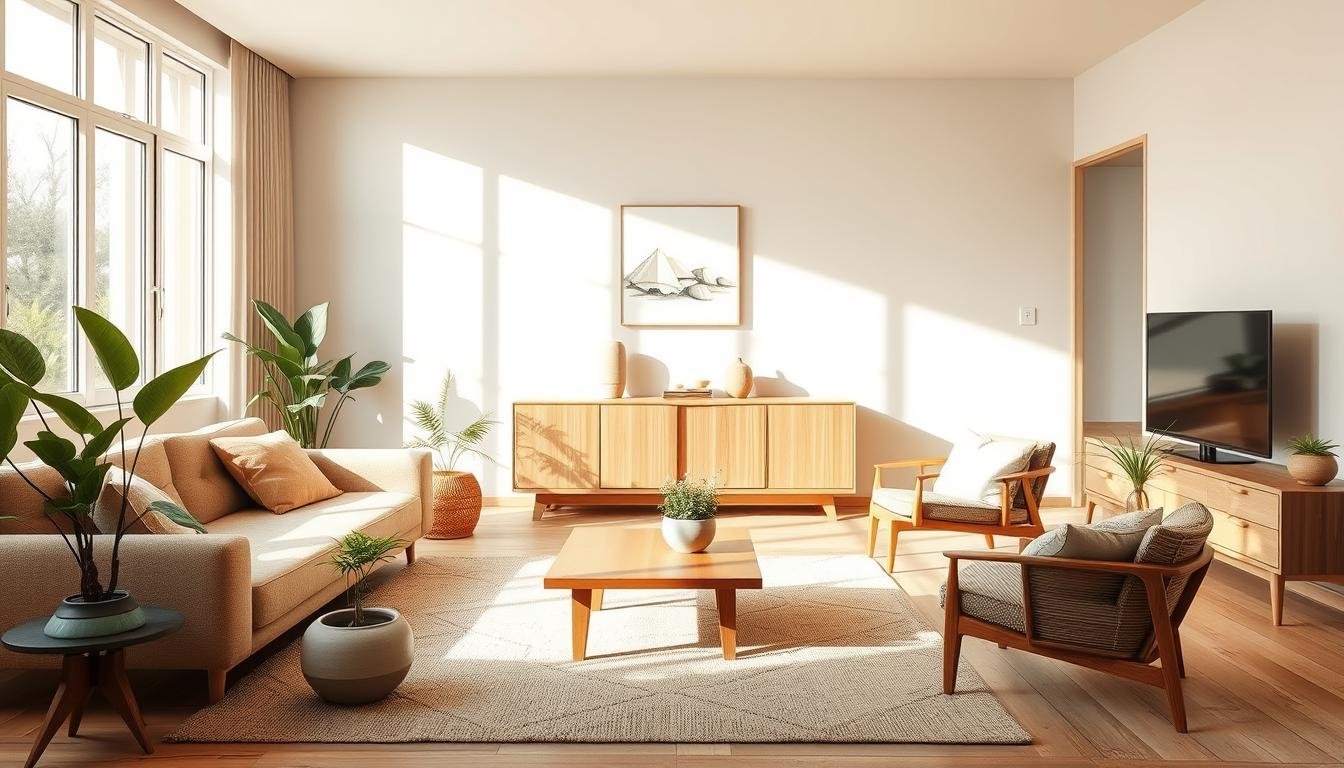
Adding Japandi decor to your home makes it calm and simple. The right furniture is key, showing elegance and being useful. Pieces that are low to the ground and made from nature create a peaceful feel.
Furniture and Its Importance
Furniture is vital in Japandi decor, with clean lines and natural shapes. Woods, grays, and greens make the space calm. Collections like Rêve d’Orient and Ensō bring an earthy feel.
These pieces are made to last and show great craftsmanship. They make the space peaceful and beautiful.
Use of Art and Accessories
Art and accessories make Japandi spaces special. Handmade items add a unique touch, celebrating individuality. Choose items made from nature, like ceramics and textiles, for a calm feel.
Kintsugi tiles highlight beauty in imperfections. They add depth and beauty to your space. These elements bring harmony and keep the design true to its roots.
Incorporating Plants in Japandi Design
Adding plants is key in Japandi design. They clean the air and make the space feel good. Use clay or ceramic planters to match the decor.

Make plant arrangements that follow feng shui. This brings balance and positive energy. It connects with nature, fitting Japandi’s values of simplicity and sustainability.
Creating Japandi Style at Home

To bring Japandi style into your home, start with a plan, room by room. A step-by-step guide makes it easier and more fun. My tips will help you create a peaceful space that mixes Scandinavian warmth with Japanese simplicity.
Room by Room Guide
Living Room:
- Choose furniture made from natural materials like wood and ceramics.
- Select multi-functional items, such as a coffee table with storage.
- Use soft, calming colors like gray and white.
- Add subtle accent colors, like cherry blossom pink, for beauty.
Bedroom:
- Use soft fabrics like cotton and linen for bedding and throws to add warmth and coziness.
- Keep the room feeling open and airy by rearranging furniture occasionally.
- Incorporate simple lighting fixtures to enhance the design and create a cozy atmosphere.

Tips for Small Spaces
If you have a small space, making it Japandi is key. Use furniture that does more than one thing, like an ottoman with storage. Arrange furniture to make the space feel bigger and let natural light in. Use wall sconces for light that doesn’t clutter the space.
Adding plants or bonsai trees brings nature inside. This fits the Japandi philosophy and makes your space more peaceful. With these tips, you can make any small space feel like a calm retreat.
Balancing Light and Dark in Japandi Interiors
Creating harmony in Japandi interiors means balancing light and dark. Start with a darker base and choose a rich, neutral color. This lets you add traditional black and red, adding depth and character.
By mixing warm, natural colors with cool Scandinavian tones, balance comes easily. This mix makes the space feel harmonious.
Choosing the Right Color Schemes
Neutral colors are key for Japandi interiors. Mix soft neutrals with deeper hues for contrast. This makes any room look better.
Natural materials like wood, linen, and ceramics draw the eye. They create a layered look that balances light and dark. Shou Sugi Ban, using charred wood, adds texture and depth.

The Role of Lighting in Japandi Spaces
Lighting in Japandi spaces does more than just light up the room. Natural light is crucial, filtered through Shoji doors. These doors let in light while keeping things private.
Soft ambient lighting, like rice paper lamps, adds warmth. This careful lighting makes darker elements enhance the space, not overshadow it.
Exploring Japandi vs Scandinavian design shows us their unique looks. Both styles love minimalism but in different ways. Scandinavian design uses light colors for a bright, welcoming feel.
Japandi, on the other hand, goes for deeper colors and natural materials. It brings a sense of earthiness and simplicity.
Differences in Aesthetic Approaches
The color choices are a big difference. Japandi uses calm, natural colors like bamboo and wood. Scandinavian design is all about bright whites and soft grays.
Both styles focus on being useful and easy to use. They often have furniture that does more than one thing.
Incorporation of Cultural Elements
Japandi is all about connecting with nature and handmade beauty. It’s calm and simple. Scandinavian design, on the other hand, is cozy and warm.
It uses wool and linen for a snug feel. Japandi and Scandinavian designs blend to create a welcoming home. They mix Nordic and Asian styles in a unique way.
History and Origins of Japandi Style


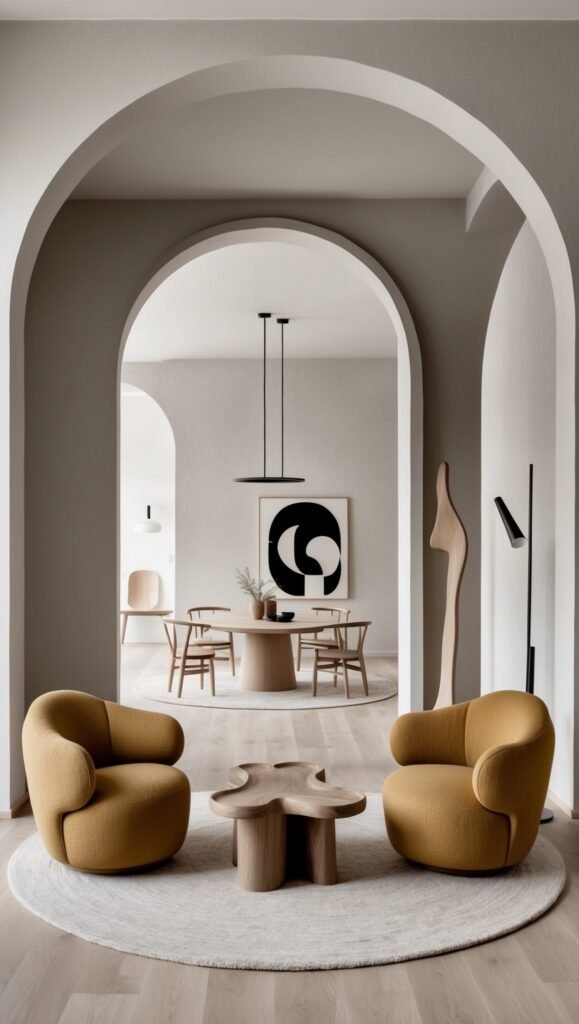

The story of Japandi design started over 150 years ago. Artists from Scandinavia and Japan came together. They mixed their ideas to create a new style that many love today.
This style is all about keeping things simple, loving nature, and valuing hard work. As I look into the *history of Japandi interior design*, I see a deep respect for these values.
Cultural Ties Between Scandinavia and Japan
The mix of Japanese and Scandinavian styles is fascinating. It shows how both places love natural things and accept imperfections. They both enjoy cozy spaces, with Japanese Wabi-Sabi and Scandinavian Hygge leading the way.

These ideas show a deep respect for making things well and the beauty of change. It’s amazing to see how these values come together.
FAQ
What is Japandi style?
Japandi style mixes Scandinavian and Japanese design. It’s all about being simple and using natural materials. It also focuses on making spaces functional.
How do I create a Japandi style at home?
To get Japandi style at home, start by decluttering. Use natural materials and choose soft colors. Pick furniture that’s low to the ground and add decor thoughtfully.
What are the main characteristics of Japandi design?
Japandi design is all about being simple. It uses wood and stone and has a calm color scheme. It also adds comfort with soft textures and lights.
How do wabi-sabi and hygge contribute to Japandi style?
Wabi-sabi loves the beauty of imperfection. Hygge makes spaces cozy and inviting. Together, they make Japandi spaces beautiful and comforting.
What types of furniture work best in Japandi decor?
Japandi decor likes furniture that’s low and functional. It should be made from natural materials. This adds to the space’s harmony.
Can I incorporate plants into my Japandi design?
Yes, plants are great in Japandi design. They bring nature in, clean the air, and make spaces calm. They fit well with Japandi’s simple and green vibe.
What color palette works best for Japandi interiors?
Japandi interiors use soft colors like beige and green. These colors create a calm background that helps you relax.
How can I balance light and dark in my Japandi space?
Mix soft colors with deeper ones in Japandi spaces. Use lights that make the space warm and cozy. This balances light and dark nicely.
Is Japandi style still popular in 2025?
Yes, Japandi style is still loved. People want designs that help them relax and enjoy nature. Japandi’s simplicity and natural beauty are big draws.
What is the history behind Japandi design?
Japandi design comes from a long friendship between Scandinavia and Japan. Artists shared ideas over 150 years ago. This led to the Japandi style we know today.
The Bottom Line
Japandi style is a mix of Japanese Wabi-Sabi and Scandinavian Hygge. It’s all about minimalism, simplicity, and natural materials. This makes it a great choice for modern homes. This style loves the beauty of imperfection and cozy spaces. It touches our hearts in a special way.
Japandi has made a big splash in home decor. It’s loved by those who want to simplify their lives. It teaches us to see beauty in the simple things.
It makes our homes feel connected to nature. This is seen in many design magazines and blogs.
Japandi creates calm and balanced spaces. It encourages us to live mindfully and feel well. It works well in any home, big or small.
Its timeless beauty brings peace to our busy lives. It turns our homes into peaceful sanctuaries.

ABOUT the AUTHOR
TOKI; INTERIOR DESIGN & lifestyle CONTENT CREATOR.
Hey there! I’m Toki—the design-obsessed brain behind Dwell Studio 24. I’m a content creator passionate about interior design, photography, and creativity, living in a 77-year-old house with my husband and our awesome three kids. I write about interior design, furniture, home topics, and my lifestyle, including travel, recipes, skincare, and daily routines. I hope to inspire your next project and lifestyle!
ABOUT the AUTHOR
TOKI; INTERIOR DESIGN & lifestyle CONTENT CREATOR.

Hey there! I’m Toki—the design-obsessed brain behind Dwell Studio 24. I’m a content creator passionate about interior design, photography, and creativity, living in a 77-year-old house with my husband and our awesome three kids. I write about interior design, furniture, home topics, and my lifestyle, including travel, recipes, skincare, and daily routines. I hope to inspire your next project and lifestyle!
ABOUT the AUTHOR
TOKI; INTERIOR DESIGN & lifestyle CONTENT CREATOR.

Hey there! I’m Toki—the design-obsessed brain behind Dwell Studio 24. I write about interior design, furniture, home topics, and my lifestyle, including travel, recipes, skincare, and daily routines. I hope to inspire your next project and lifestyle!

